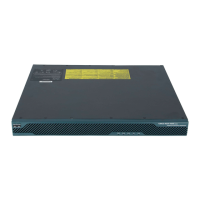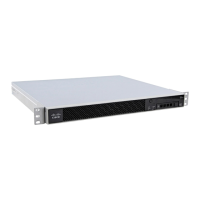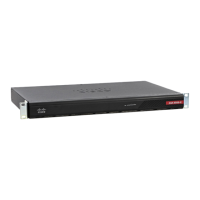1-31
Cisco ASA Series CLI Configuration Guide
Chapter 1 Configuring a Cluster of ASAs
Configuring ASA Clustering
What to Do Next
Configure interfaces. See the “Configuring Interfaces on the Master Unit” section on page 1-31.
Configuring Interfaces on the Master Unit
You must modify any interface that is currently configured with an IP address to be cluster-ready before
you enable clustering. For other interfaces, you can configure them before or after you enable clustering;
we recommend pre-configuring all of your interfaces so that the complete configuration is synced to new
cluster members.
This section describes how to configure interfaces to be compatible with clustering. You can configure
data interfaces as either Spanned EtherChannels or as Individual interfaces. Each method uses a different
load-balancing mechanism. You cannot configure both types in the same configuration, with the
exception of the management interface, which can be an Individual interface even in Spanned
EtherChannel mode. For more information, see the “ASA Cluster Interfaces” section on page 1-4.
• Configuring Individual Interfaces (Recommended for the Management Interface), page 1-31
• Configuring Spanned EtherChannels, page 1-33
Configuring Individual Interfaces (Recommended for the Management Interface)
Individual interfaces are normal routed interfaces, each with their own IP address taken from a pool of
IP addresses. The Main cluster IP address is a fixed address for the cluster that always belongs to the
current master unit.
In Spanned EtherChannel mode, we recommend configuring the management interface as an Individual
interface. Individual management interfaces let you connect directly to each unit if necessary, while a
Spanned EtherChannel interface only allows connection to the current master unit. See the “Management
Interface” section on page 1-10 for more information.
Prerequisites
• Except for the management-only interface, you must be in Individual interface mode; see the
“Configuring the Cluster Interface Mode on Each Unit” section on page 1-30.
• For multiple context mode, perform this procedure in each context. If you are not already in the
context configuration mode, enter the changeto context name command.
• Individual interfaces require you to configure load balancing on neighbor devices. External load
balancing is not required for the management interface. For information about load balancing, see
the “Load Balancing Methods” section on page 1-12.
• (Optional) Configure the interface as a device-local EtherChannel interface, a redundant interface,
and/or configure subinterfaces.
–
For an EtherChannel, see the “Configuring an EtherChannel” section on page 1-28. This
EtherChannel is local to the unit, and is not a Spanned EtherChannel.
–
For a redundant interface, see the “Configuring a Redundant Interface” section on page 1-26.
Management-only interfaces cannot be redundant interfaces.
–
For subinterfaces, see the “Configuring VLAN Subinterfaces and 802.1Q Trunking” section on
page 1-31.

